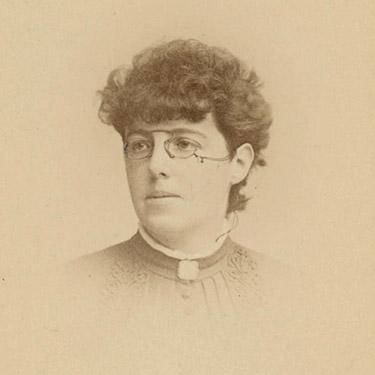'Scott of Girton'
She broke barriers at Cambridge and opened doors at Bryn Mawr.
In 1922, nearly 200 guests—including scholars from McGill, Yale, Johns Hopkins the University of Chicago, and even the Imperial College of Science—gathered at Bryn Mawr to celebrate the pioneering mathematician Charlotte Angas Scott.
Scott had arrived from Britain 37 years earlier to establish Bryn Mawr’s mathematics department. During her tenure, she built the undergraduate and graduate programs, published a text on plane analytical geometry, authored more than 30 papers, and mentored eight students through their Ph.D. dissertations.
Of her mentor, Isabel Maddison wrote in a remembrance for the Bulletin, “Perhaps, it was her graduate students who appreciated her most, and the long line of candidates for the Doctor’s degree, many now teaching in colleges all over the country”—among them Vassar, Mt. Holyoke, and Bryn Mawr—“to whom she gave her devoted attention.”
But an academic career was hardly assured.
As an undergraduate at Girton College, Scott had been given permission to attend classes at nearby Cambridge University— although only if she sat behind a screen that separated the women from the male students.
And in January 1880, she had to receive special dispensation to sit for Cambridge’s Mathematical Tripos exams, which qualified undergraduates for a bachelor’s degree. Scott finished eighth, but official recognition went to a male student.
The slight was too much for the students of Cambridge, and when the eighth-place winner was about to be announced at the award ceremony, a raucous chorus of “Scott of Girton” broke out.
In the aftermath, Cambridge University policy changed. Women could take the exam and would see their scores listed—although separately from the men’s and thus not part of the official rankings.
Published on: 11/24/2020

